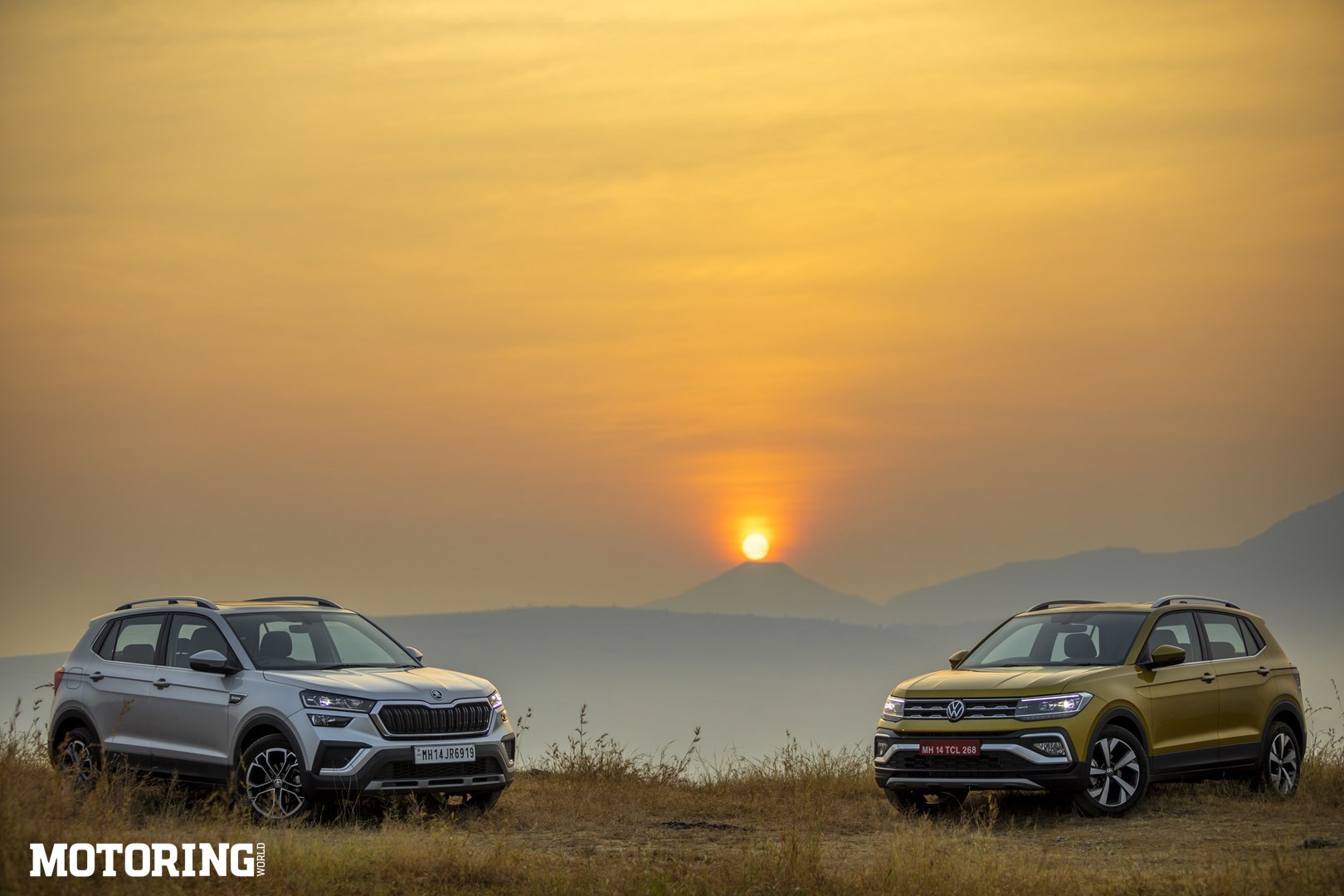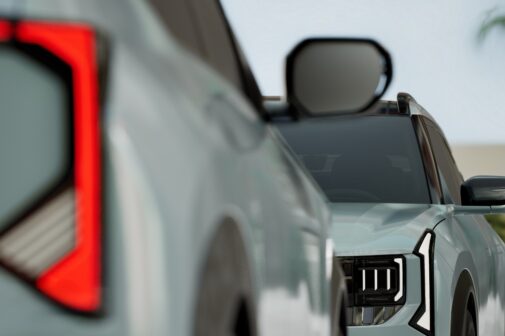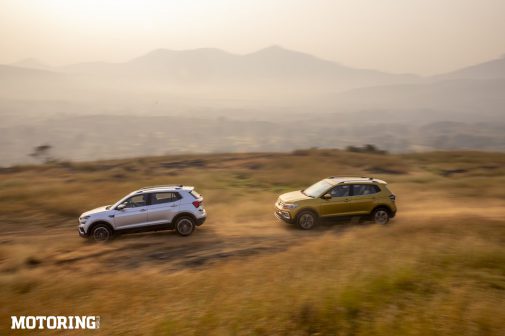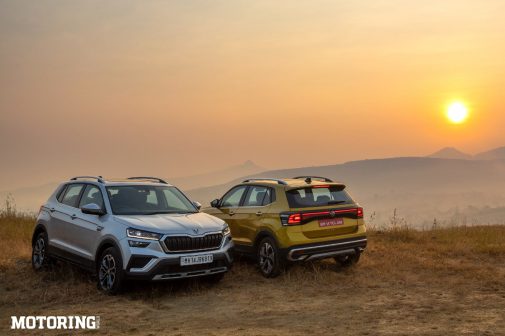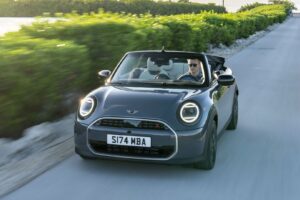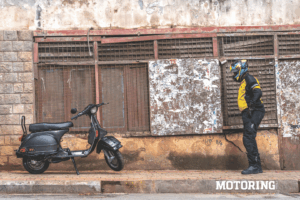Badge-engineering isn’t a new concept, and there’s no denying it makes good financial sense for companies operating under a common umbrella. The downside is that badge-engineered cars are sometimes so alike that they end up cannibalising each other’s sales. The Volkswagen Taigun and Skoda Kushaq are the latest examples of badge-engineering in our market, and though they look unique, there are many mechanical and structural components that are shared between the two Hyundai Creta rivals. Both midsize SUVs also target the same customers — those looking for a fun-to-drive alternative to the Kia Seltos and others of its ilk. In order to find out just how much of an overlap there is between the two, we got the 1.0-litre automatic versions of the Taigun and Kushaq together and let them have it out.
Let’s get the obvious stuff out of the way first. Although the SUVs share the India-specific MQB-A0-IN platform, there’s no mistaking one for the other. As I had mentioned when I first drove the Taigun, it looks typically VW — solid, clean and understated (except for the excess of chrome on the bumpers), yet muscular. The lines flow nicely along the sides, the VW’s alloys invoke a sense of speed and then you come to the rear, which is very slick indeed. I’ve said it before and I’ll say it again — the LED bar that runs across the tailgate and connects the tail-lights is stunning, especially when lit up.
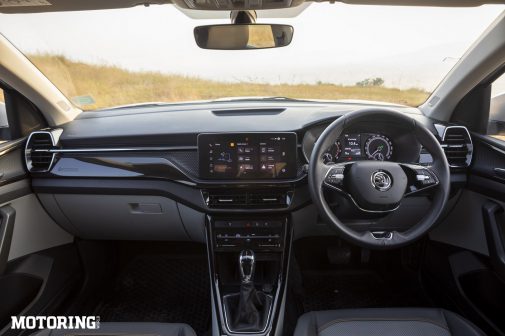
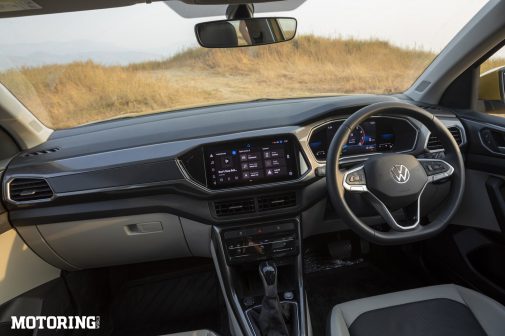
The Kushaq is a beefier looking SUV. Yes, it does have typical Skoda traits — from that vertically-slatted grille to the upright stance — and that’s no bad thing. It seems to stand higher than the Taigun, which enhances the SUV appeal significantly. The black-finished 17-inch alloy wheels are fetching, and the rear fits well with the Skoda’s sporty pretensions. Look closely, though, and you’ll see that the shape of both SUV’s tailgates is near-identical, other than the taillights and the badges.
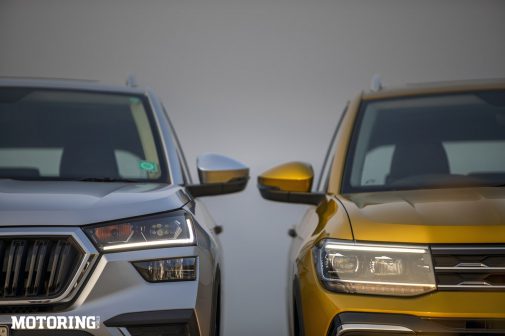
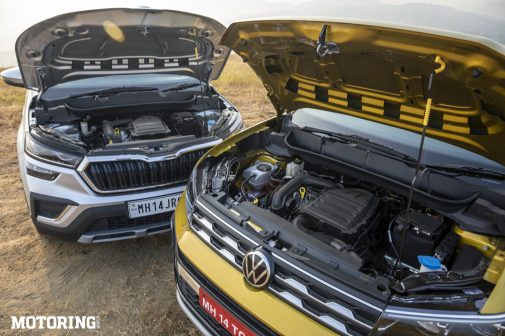
Step into either of the two and the similarities continue, from the dashboard design to the slider switches for the climate control system on the centre console. Sure, the steering wheel units and the AC vents are unique, along with the placement of the 10-inch infotainment touchscreen; however, in terms of seat comfort, space and even ambience, there’s very little that separates the Taigun and the Kushaq. The seats are well-bolstered and comfy on long drives, and there’s ample room, notwithstanding the lack of shoulder room when seating five. Both cabins are well-put together and feel durable as well. There are also some notso- nice signs of cost cutting on both, like the exposed sunroof mechanisms. Boot space is also the same, and 60:40 split-folding rear seats are available on both, in case more cargo space is required.
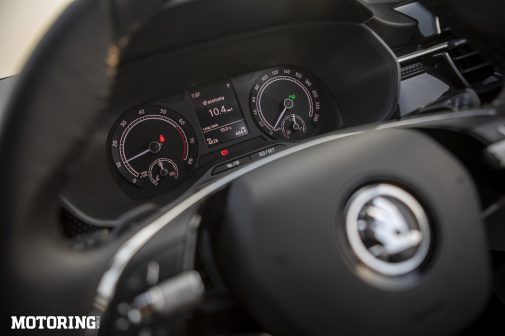
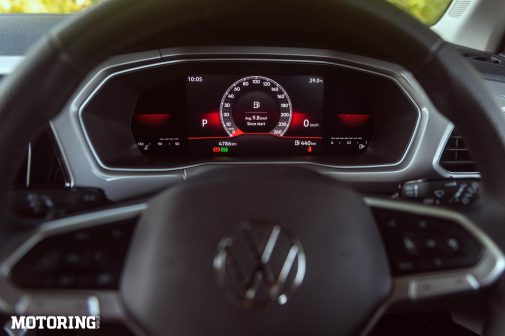
If pushed, I’d say the Taigun feels slightly more premium on the inside, though I do prefer the Kushaq’s old-school instrument cluster. It’s not that the Taigun’s nice-looking digital dials fall short, by any standard; the preference for analogue dials is personal. Other than the aforementioned difference in the instrument cluster, the overall features list (including the safety kit on offer) is, again, the same — with one exception. One of my go-to bands, when testing out a car’s audio system, is Red Hot Chili Peppers, as I find that most of their music really has every tone that’s pleasing to my ears. And I found that I could hear Flea’s deep bass lines with greater clarity on the Kushaq’s system — because there’s a subwoofer in its boot.
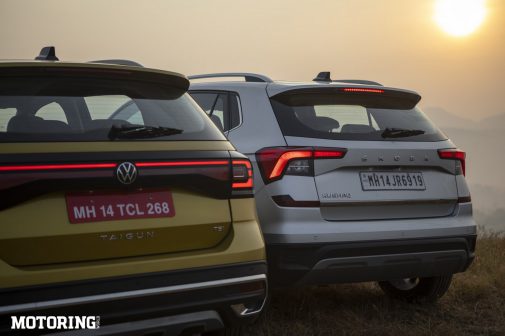
Notable safety kit and feel-good features on the respective top-spec variants include six airbags, ESP, a reversing camera, auto LED headlamps, ventilated front seats, wireless Android Auto and Apple CarPlay and wireless smartphone charging.
The Kushaq and Taigun are powered by a 999cc three-cylinder turbo-petrol engine making 114 bhp and 18.15 kgm of peak torque, which sends power to the front wheels via a 6-speed torque convertor automatic gearbox. The engine and gearbox work together marvellously while pottering around the city as well as while mile-munching. Driving it with a heavy right foot will see fuel-efficiency figures drop to under 10 kpl quickly, though a more measured foot will deliver around 20 kpl on the highway. It’s too bad (mainly for your pocket) that the powertrain is too fiesty to drive with restraint.
Still, the Kushaq feels marginally more energetic than the Taigun, and that may be down to the 10 kg weight advantage. We didn’t have the opportunity to test the actual figures, but I think they’ll be telling. The story continues with the way that they drive, too. Both are absolutely superb around corners, feel planted through a set of twisties and provide a ride quality that simply smothers bad roads at speed. There is an underlying stiffness to the Taigun and Kushaq that is an absolute joy, with a small quibble being the slightly numb steering. On the other hand, that same stiffness results in a bit of a jittery ride at low speeds. Despite the lack of rear disc brakes, in reality, neither the Kushaq nor the Taigun seems to actually need them; they both come to a halt quickly and smartly.
Despite the overwhelming similarities, there’s a significant price difference between the respective range-topping versions of the SUVs with the 1.0 TSI engine. The Taigun is priced at Rs 15.95 lakh, ex-showroom, India, while the Kushaq costs Rs 25,000 more, at Rs 16.20 lakh, which is surprising, since you don’t really get more of anything in the Skoda than you do in the Volkswagen — and therein lies the rub. Having spent some time in both, my heart goes towards the Kushaq for its analogue dials and the bassier sound system, but my head says the Taigun (albeit in any other colour than the yellow our test car came in). If you’re willing to forego side and curtain airbags, then there’s a Kushaq that can also be had at Rs 15.80 lakh, but that’s not a trade I’m willing to make.
AUTODATA
Volkswagen Taigun Dynamic Topline (1.0-litre TSI AT)
POWERTRAIN
Displacement:
Max Power:
Max Torque:
Transmission:
999cc, I3, turbo-petrol
114 bhp@5000-5500 rpm
18.15 kgm@1750-4000 rpm
6AT
TYRES
F/R: 205/55 R17
DIMENSIONS
L/W/H(mm):
Wheelbase:
Ground Clearance:
Kerb Weight:
Fuel Capacity:
4221/1760/1612
2651 mm
188 mm (unladen)
1275 kg
50 litres
PRICE
Rs 15.95 lakh (ex-showroom, India)
AUTODATA
Skoda Kushaq Style (1.0-litre TSI AT, 6 Airbags)
POWERTRAIN
Displacement:
Max Power:
Max Torque:
Transmission:
999cc, I3, turbo-petrol
114 bhp@5000-5500 rpm
18.15 kgm@1750-4000 rpm
6AT
TYRES
F/R: 205/55 R17
DIMENSIONS
L/W/H(mm):
Wheelbase:
Ground Clearance:
Kerb Weight:
Fuel Capacity:
4221/1760/1612
2651 mm
188 mm (unladen)
1265 kg
50 litres
PRICE
Rs 16.20 lakh (ex-showroom, India)





